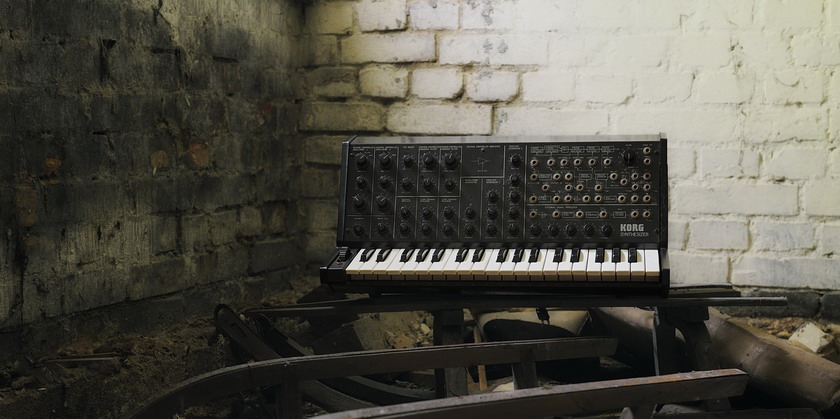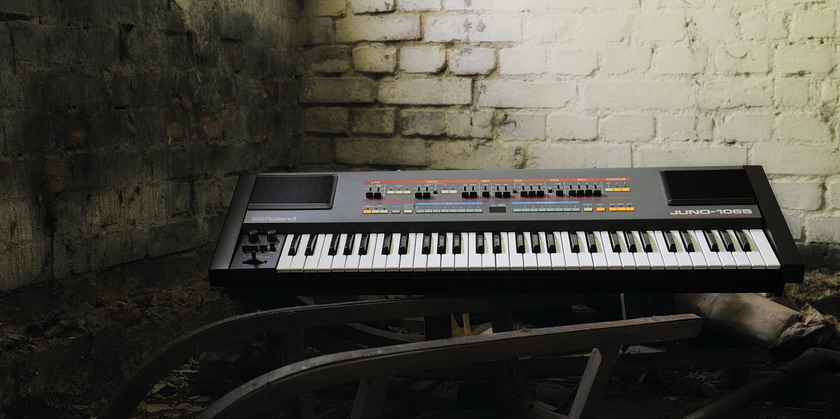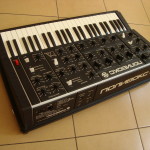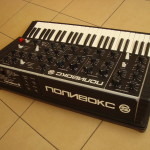Sadly, we are discontinuing Polivokses. The last piece we have is offered for sale for just 1050 EUR (at 0% VAT). Shipping by privat etransport only as these are quite fragile.
We are very proud of the fact that we are one of Europe’s most experienced Formanta Polivoks technician / dealer. We have lost track of the number of Polivokses we have touched but these numbers are well over 200. We know how they are supposed to sound and we know how to service them properly. We put a lot of work into preparing each Polivoks and we are happy to confirm that failure rate is very, very low – more or less the same as in case of American or Japanese synths.
Each of our Polivokses is taken apart – it’s not a figure of speech, we do take them to pieces – and all of the parts that need to be cleaned are cleaned, all of the parts that need to be regenerated are regenerated (think pots and switches) and all of the parts that need to be upgraded are upgraded (think replacing ALL of the capacitors). Then the unit is put back together, MIDI is fitted and final calibration is performed. So if you compare our prices with others, please take into account the sheer amount of work that is needed to get a Polivoks right.
As far as the MIDI is concerned, this kit provides duophonic midi control to the Polivoks synthesizer allowing it to play in a range of 64 midi notes from F1 (#41) to G#6 (#104) with midi pitchbend (+-1 octave by default) and VCF cutoff control by modwheel (CC01).
Please click on the “Contact” tab in the top right corner of the page if you are not sure whether VAT applies to you.
FREQUENTLY ASKED QUESTIONS
Q: I have heard that Soviet synths in general (including Polivokses) are unreliable and have serious tuning issues.
A: That is totally not true and a myth, most likely created by people who had Polivokses that had issues but did not know how to fix them. Speaking from experience (and that’s anywhere between 150-200 Polivokses), it can be said that Polivokses that have not had a general overhaul since they were new will be barely functional and, no matter how beautiful, will develop faults, have terribly scratchy pots and might indeed have tuning issues. The rule of thumb here is that if you find a Japanese synth in the attic, it most likely will work fine. Soviet synths won’t. HOWEVER, once a Soviet synth received a full overhaul – in case of Polivoks it means taking everything apart, replacing ALL capacitors, etc. – it will function properly for years to come and not have any tuning issue. But it simply has to be done properly and by someone who knows how to do it and how a Polivoks should sound. Polivokses are not Yetis, they are regular synthesizers and should be treated as such.
Q: I have been told that all this Polivoks mania is just hype and they are not worth the price.
A: Everyone is entitled to their own opinion but it should be noted when that opinion is not true. And this one isn’t. You can of course say you dislike the sound of Polivoks (though we have NEVER had a client return theirs) but you can’t say it does not have it’s own peculiarities. Let’s pick two. Firstly, the filter has a very unusual design and makes the Polivoks sound very aggresive. The filter is an original design by Mr. Kuzmin and the Polivoks sounds like no other synth. It’s a fact. Secondly, the loopable envelopes of filter and amplifier – this is of course no shocking feature but name three other “regular” monostnths that share this feature. See? Do not ever let anyone say the Polivoks is a boring ripoff. It’s not. One thing is true, though. The Polivoks has the absolutely worst keyboard I have ever touched. We of course improve the action considerably but still… Luckily, they have MIDI, so who cares?
Q: Arent’s your Polivokses a bit expensive? I have seen nice units sold on eBay for 800 USD.
A: Please note that a sample Polivoks offered on eBay for 800 USD will cost you about 1250 USD (1128 EUR) including shipping and customs fees. Also, when buying gear from outside of EU, you are effectively buying something without any guarantee whatsoever – even if the seller offers a free repair, it will not be economically viable to shipi it back for repair due to high cost of shipping and customs hassle. Also, please make sure that the Polivoks you are about to buy has been restored to the point we restore ours. Be advised that, in the long run, there is no such thing as fully operatonal Polivoks if it had not had a general overhaul in the first place. I have seen “like new” Polivokses (perhaps never used) that were acting so bad to the point of being musically useless.
Q: I read somewhere that early Polivokses sound better. Is it true?
A: This superficially simple question is actually one with many implications and, in our opinion, one that can’t be answered. In the world of analogue instruments there are dozens of similar examples that have resulted in something that’s on the verge of mythology. For example: Korg MS-20, moog Minimoog Model D, Sequential Circuits Prophet 5 or (Fender) Rhodes piano. And Polivoks, of course. There indeed have been changes: Fender Rhodes from 1972 will sound very different to the Mk2 from 1984. SSM-based Prophet 5 Rev. 2 will sound different to CEM-based Rev. 3. Early MS-20s will sound different to later ones. Same (but to a lesser extent IMHO) for the Polivoks. And my favourite example: the Minimoog. Very often you might read that the earliest Minimoogs are most organic, warmest in sound. But Bob Moog himself said that these are too imperfect and he swears by the latest ones. So one advice from us: let your ears be the judge. Do not choose one thing over another because somebody wrote you should.
Q: There are so many other exciting Soviet synthesizers. Why do you deal only with Polivoks and Aelita?
A: When you run a small company, you have to specialize. You always have very limited time plus it’s always you who pays for that time. So you have to minimize the risk of failures, meaning it’s best to focus on the instruments you know best. And we know the Polivoks and Aelita best.

















